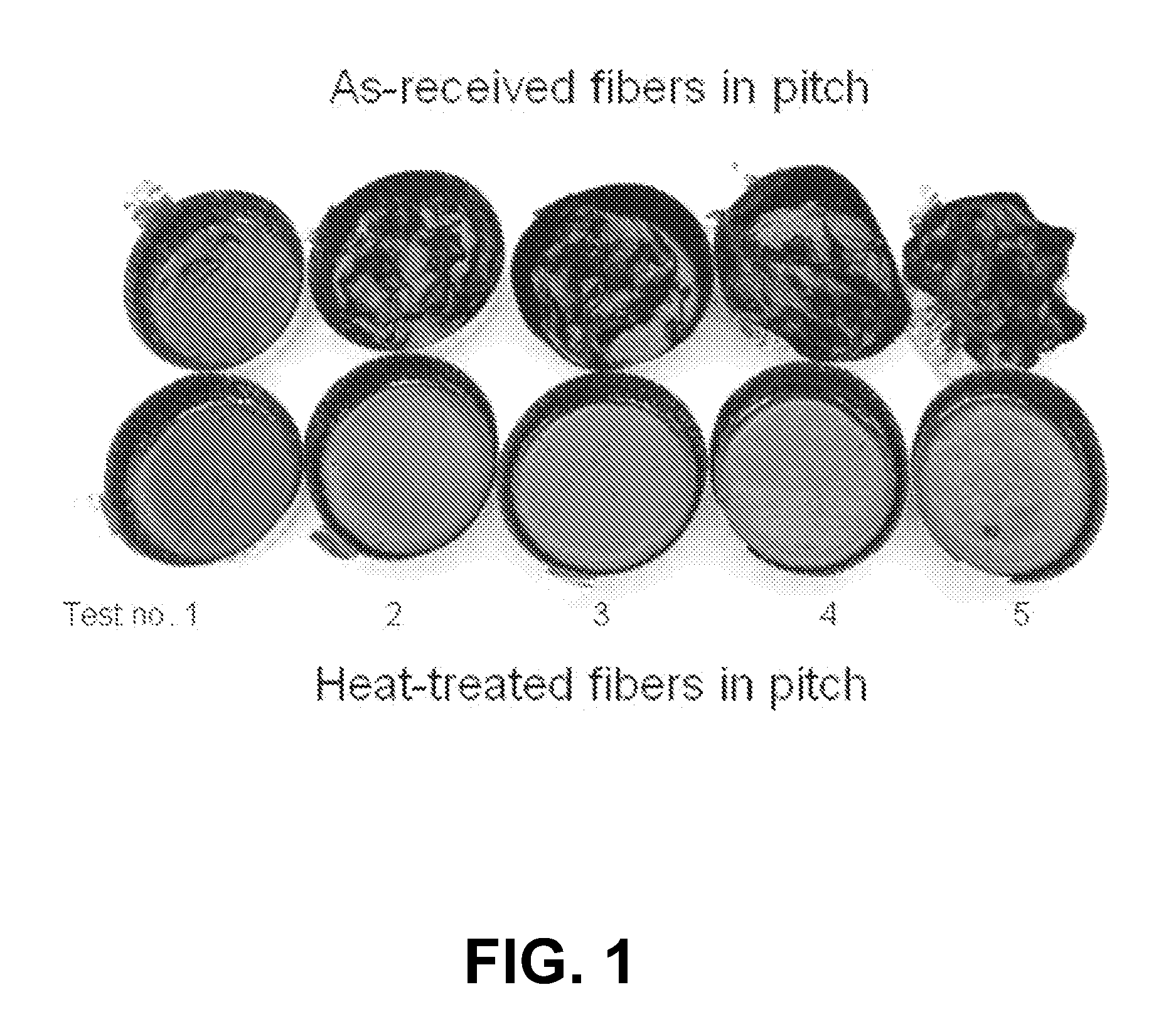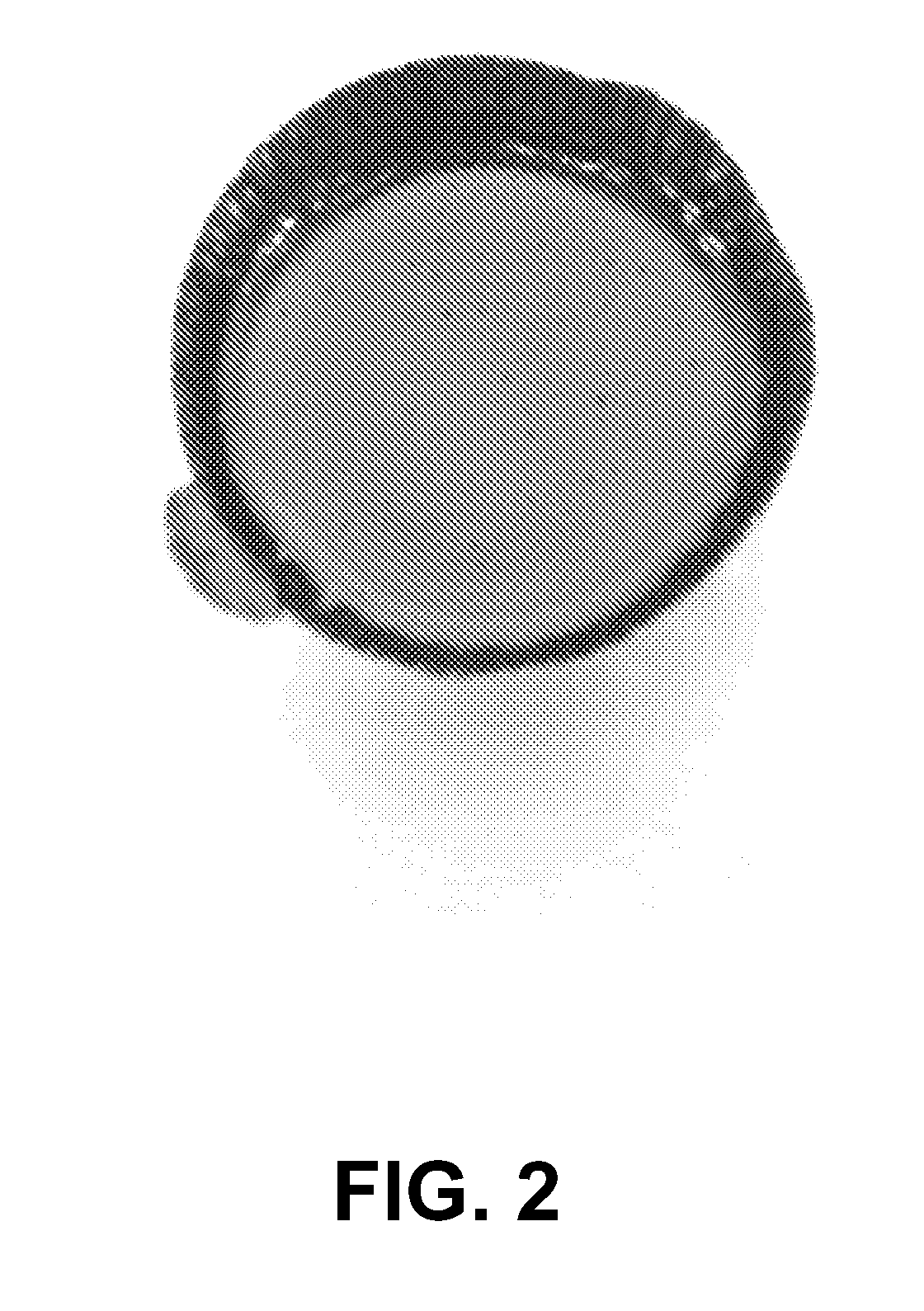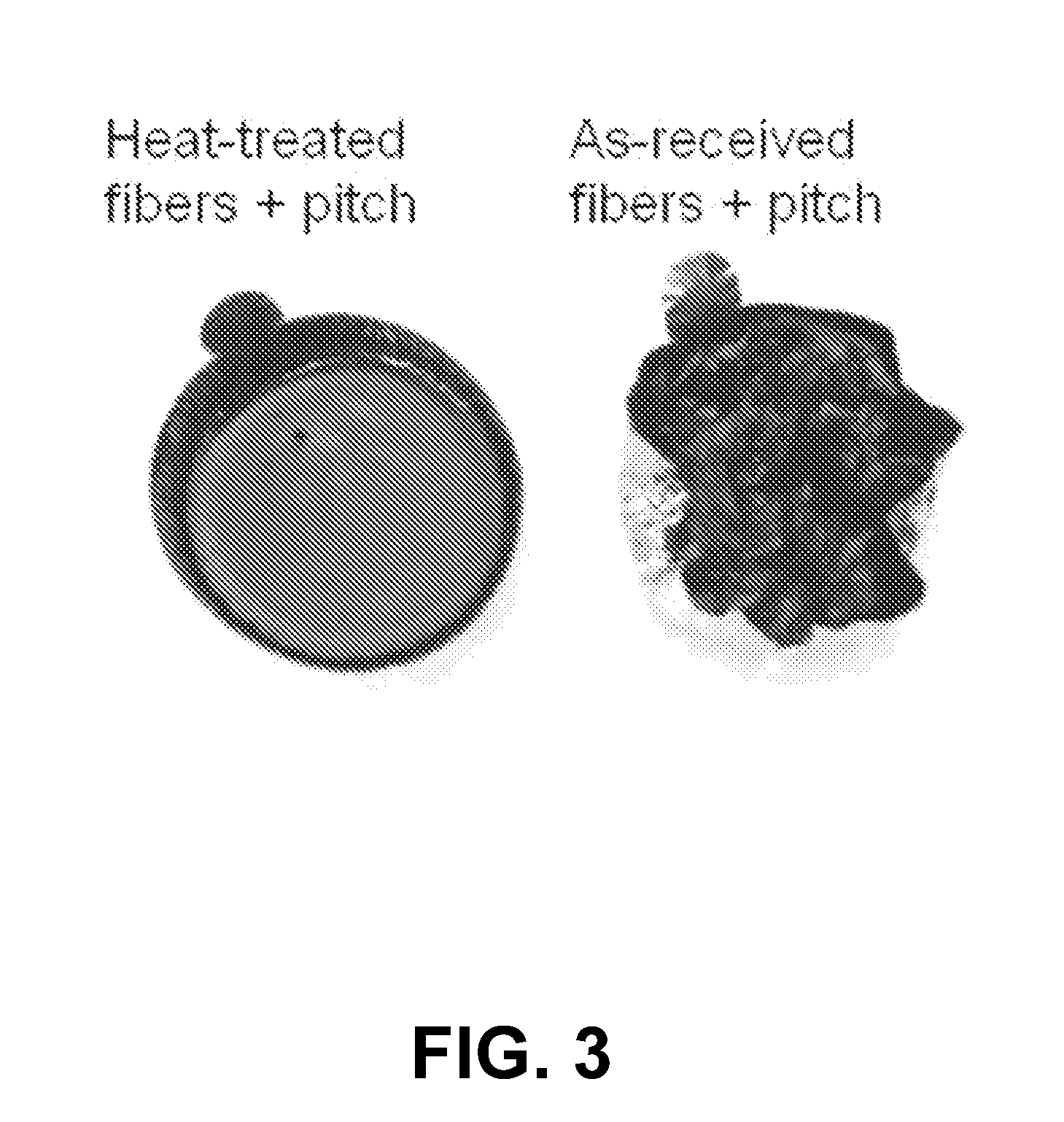Toughened graphite electrodes for electric arc furnaces
a graphite electrode and electric arc furnace technology, applied in furnaces, other chemical processes, lighting and heating apparatus, etc., can solve the problems of inability to operate electrodes, significant downtime, loss of productivity, etc., to reduce the transverse and/or longitudinal coefficient of thermal expansion, improve strength, and less likely to fail
- Summary
- Abstract
- Description
- Claims
- Application Information
AI Technical Summary
Benefits of technology
Problems solved by technology
Method used
Image
Examples
example 1
Preparation of Untreated Carbon Fibers / Pitch Samples
[0040]The dispersability of untreated carbon fibers in molten pitch was determined by mixing carbon fiber bundles, as-received without any surface treatment, into five samples of molten pitch as follows. First, five samples of coal-tar pitch were taken above their softening point and thereby made molten. Thereafter, a bundle of as-received fibers was added to each sample of molten pitch. The fiber-pitch mixture was stirred using a stainless steel spatula. Table 1 below lists the quantities of carbon fibers and pitch that were used for each of the five samples. The samples were made to vary in wt % of carbon fibers from 0.9 wt % to 6.3 wt % (for test nos. 1-5, respectively). The samples were then cooled to the solidification point of the pitch binder, after which the samples were analyzed.
TABLE 1Fiber and pitch quantities used for as-received fibersTest NumberQuantity of Fibers (g)Quantity of pitch (g)10.11813.19620.30713.56430.5071...
example 2
Heat Treatment of Carbon Fibers
[0041]Carbon fiber bundles were heat-treated by being heated to about 850° C. under flowing nitrogen and maintained at this temperature for one hour. The carbon fibers, thus treated, were cooled to below 200° C., after which point they could optionally be exposed to air without a detrimental effect. If exposed to air after the heat treatment, the carbon fibers were preferably used (e.g., combined with pitch) within two hours, and preferably less than one hour, after completion of the heat treatment. If maintained under a substantially inert atmosphere after the heat treatment, the carbon fibers may be stored in this manner until use.
example 3
Preparation of Heat-Treated Carbon Fibers / Pitch Samples
[0042]Heat-treated carbon fibers, prepared as described in Example 2, were then mixed into five pitch samples, and the resulting fiber-pitch mixtures solidified in a completely analogous manner as described above for the as-received carbon fibers in Example 1. Table 2 below lists the quantities of heat-treated carbon fibers and pitch that were used for the five samples. The five samples containing the heat-treated carbon fibers vary similarly in carbon fiber wt % to the five samples containing as-received carbon fibers. The five samples containing heat-treated carbon fibers were then solidified by cooling, and then analyzed, as described above for the as-received samples.
TABLE 2Fiber and pitch quantities used for heat-treated fibersTest NumberQuantity of Fibers (g)Quantity of pitch (g)10.10013.20320.30313.24330.50413.26140.70813.42650.90313.233
PUM
| Property | Measurement | Unit |
|---|---|---|
| viscosity | aaaaa | aaaaa |
| viscosity | aaaaa | aaaaa |
| temperature | aaaaa | aaaaa |
Abstract
Description
Claims
Application Information
 Login to View More
Login to View More - R&D
- Intellectual Property
- Life Sciences
- Materials
- Tech Scout
- Unparalleled Data Quality
- Higher Quality Content
- 60% Fewer Hallucinations
Browse by: Latest US Patents, China's latest patents, Technical Efficacy Thesaurus, Application Domain, Technology Topic, Popular Technical Reports.
© 2025 PatSnap. All rights reserved.Legal|Privacy policy|Modern Slavery Act Transparency Statement|Sitemap|About US| Contact US: help@patsnap.com



